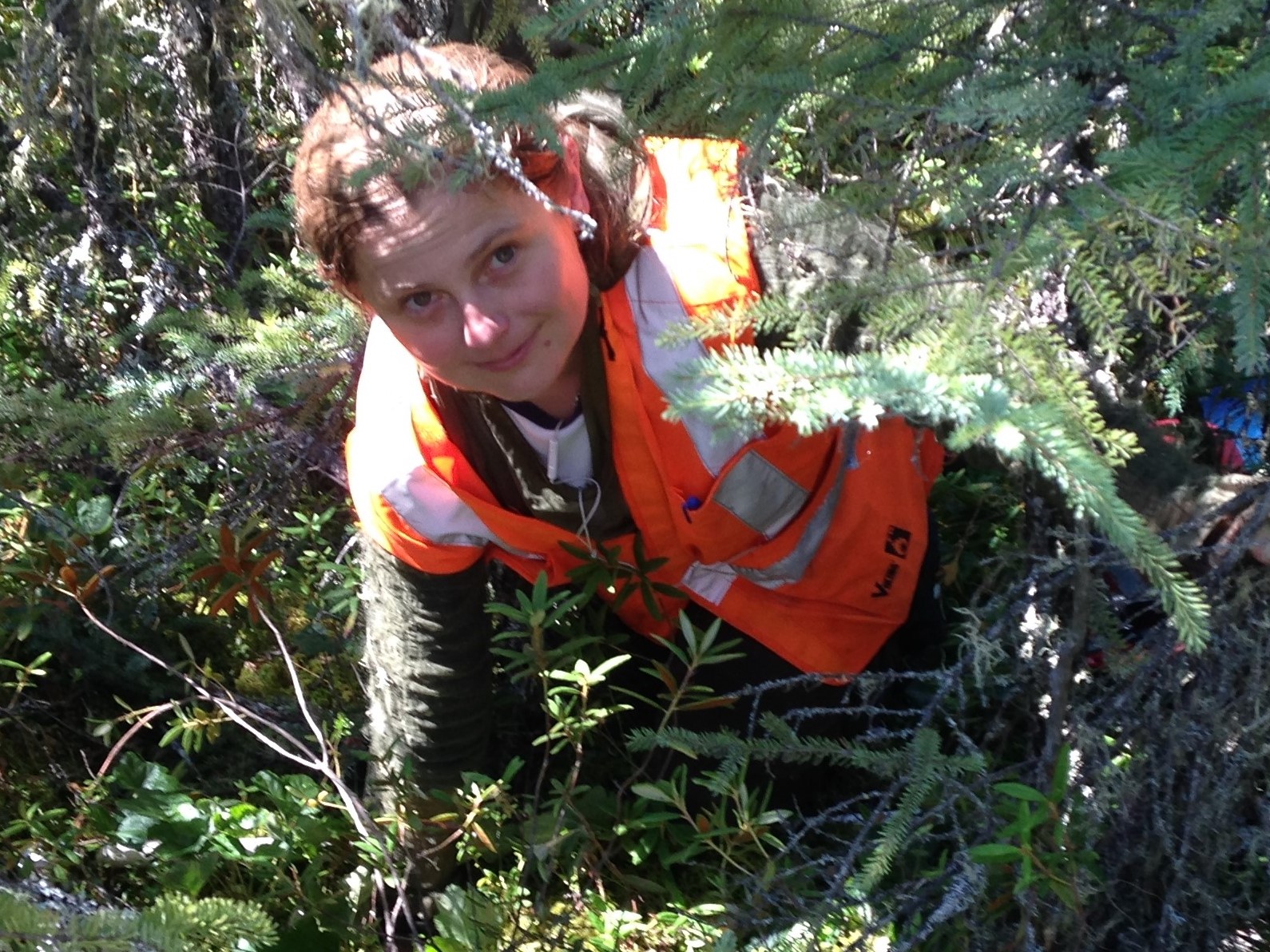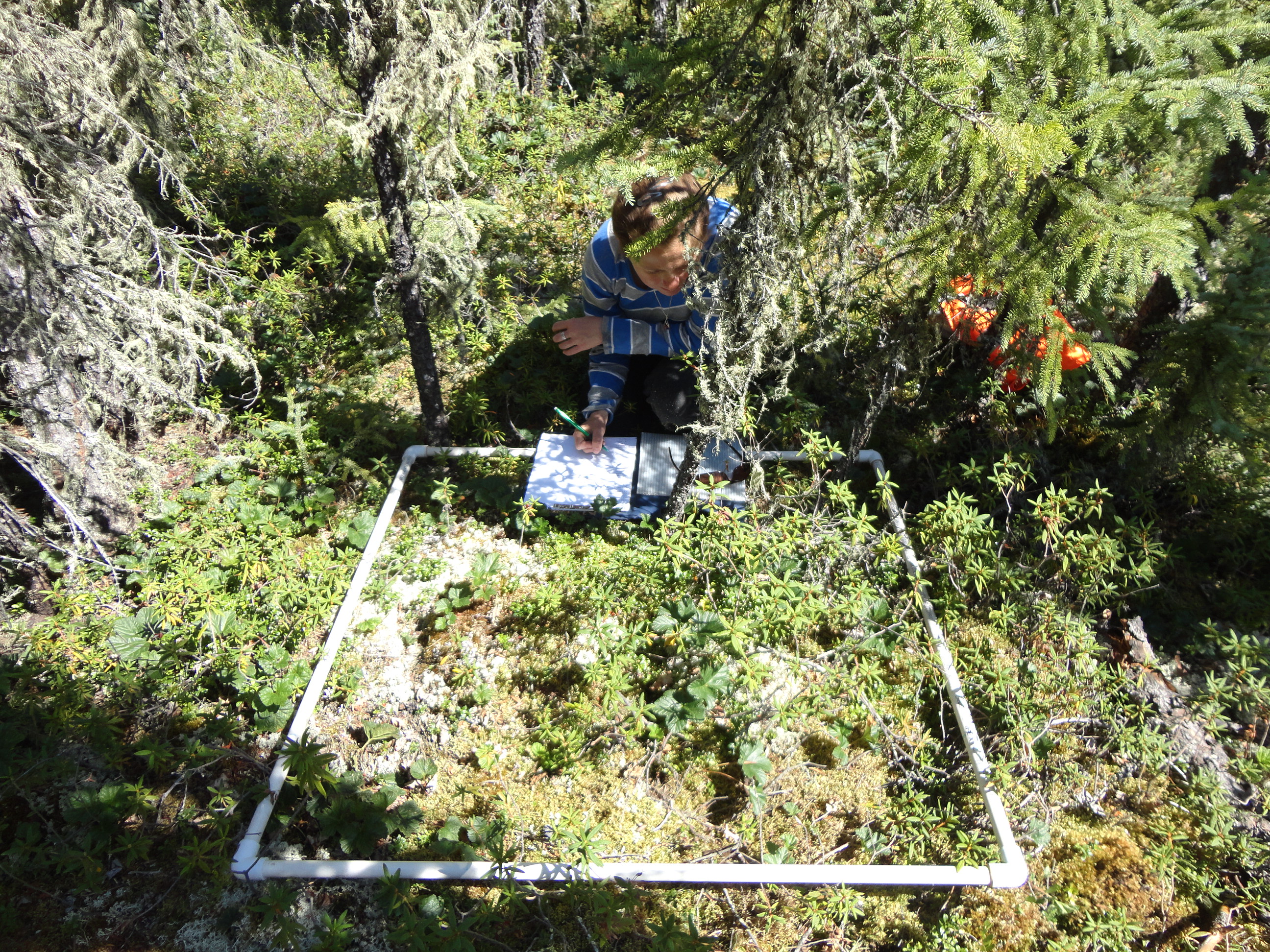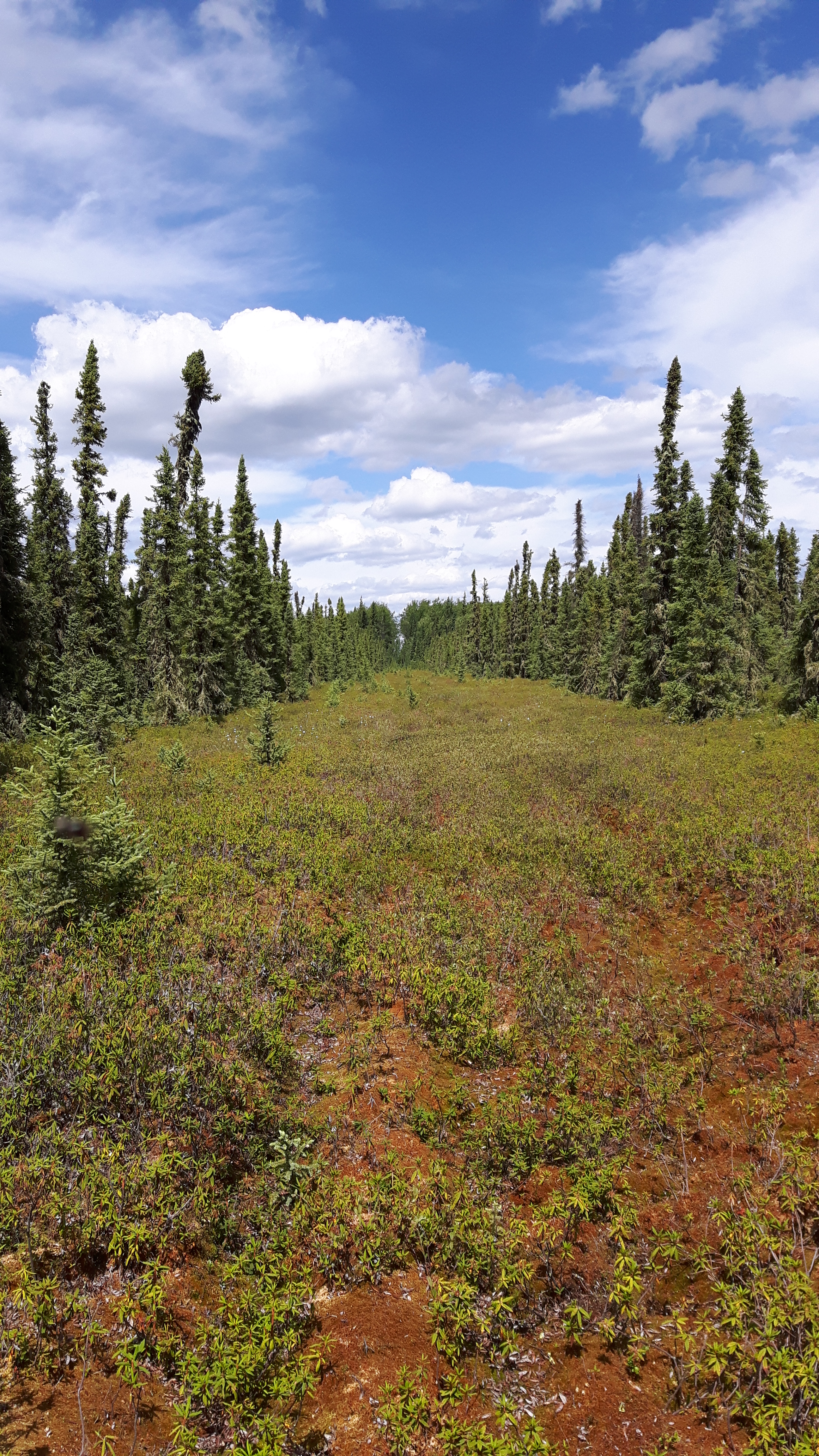Article
Applied Biology Insights: Seismic line edge effects on vegetation in northern Alberta
Posted by APB
June 7, 2022
 Research into revegetation processes along seismic lines left by oil and gas exploration in northern British Columbia and Alberta will be critical if governments and industries are to successfully reclaim these disturbances to a natural condition.
Research into revegetation processes along seismic lines left by oil and gas exploration in northern British Columbia and Alberta will be critical if governments and industries are to successfully reclaim these disturbances to a natural condition.
One contributor to that research is Canadian Forest Service (CFS) plant ecologist Dr. Anna Dabros. Dr. Dabros studies, among other things, how plants are responding to oil and gas disturbances in boreal forests and bogs in the Peace River region close to the border between north-east BC and Alberta.
Restoration Ecology, the Journal of the Society for Ecological Restoration, recently published findings from Dabros’s research in a paper titled Seismic line edge effects on plants, lichens and their environmental conditions in boreal peatlands of Northwest Alberta (Canada). The APB interviewed Dabros to find out more about the applied biology implications of this study in BC and Alberta.
APB: Can you say a little bit about your background and your research interests?
Dr. Dabros: I am a plant ecologist with the Canadian Forest Service (Department of Natural Resources Canada), and I am currently researching the assessment of ecological impacts (focusing on plants and their environmental conditions), as well as mitigation and restoration strategies of industrial disturbances in boreal peatlands and forests. I received my PhD and MSc degrees from McGill University in Montreal, and BSc from the University of Alberta in Edmonton. My current research areas and projects include:
- Plant responses to oil and gas disturbances: the effects of seismic lines on boreal forest and peatland vegetation, northern Alberta.
- The use of plant functional traits in the assessment of linear disturbances on plant communities.
- Assessment of environmental impacts of linear disturbances and mining development in the Ring of Fire region, in Hudson Bay Lowlands, northern Ontario.
- Application of Ecological Management Emulating Natural Disturbance (EMEND) to oil industry operations: in situ reclamation and future mitigation of footprint.
Previously, I was researching the effects of climate change on the regeneration of trembling aspen and black spruce at post-disturbance sites in the transitional mixedwood-boreal forest, northern Quebec, and ecological and phylogenetic aspects affecting the distribution of different sedge species in subarctic fens, northern Quebec.
APB: Who else contributed to the research for this study?
Dr. Dabros: Kellina Higgins, MSc, GeoFlora ecological consulting, a plant ecologist and independent consultant; and Jaime Pinzon, PhD, Canadian Forest Service – Natural Resources Canada, a research scientist and entomologist (arachnologist).
(Continues below...)

APB: Can you briefly describe the study objectives and methods?
Dr. Dabros: Seismic surveys for the oil and gas industry involve clearing of vegetation in long narrow corridors – seismic lines – used to transport and deploy equipment required to locate and map the oil and gas reserves. Seismic lines are currently one of the most prominent anthropogenic disturbances in Alberta and can persist in the landscape for many decades. The lack of canopy regeneration is particularly notable in treed boreal peatlands. Along with habitat fragmentation and its effects on, e.g., wildlife predator-prey dynamics (including predation of wolves on caribou, whose populations have been declining in Canada for decades), tree regeneration and growth, and thermal regimes and regional hydrology, seismic lines can lead to so-called edge effects. These effects extend beyond the line edges into the adjacent forest or peatland, rendering the ecological impact of the disturbance even larger than perceived. Edge effects often arise from changes in environmental conditions along edges, e.g., in soil structure (via compaction), reduced microtopography, and increased wind and sun exposure, which affect soil moisture, light, tree blowdown, and plant species composition.
Our study took place in the Low Boreal Mixedwood ecoregion of Alberta, over 16 km2 of treed peatlands along a 6 km stretch of the Harmon Valley regional road, approximately 50 km southeast of the town of Peace River (56.102°W and 116.532°N). The main objective of our research was to assess the extent of seismic line edge effects into the adjacent treed peatland. Specifically, we compared plant and lichen species composition and distribution of functional groups, and environmental conditions (soil moisture, soil temperature, light, relative elevation, and seasonal ice presence) on seismic lines and at different distances away from the line edge in the adjacent peatland, accounting also for the line orientation. The seismic lines at our research site were several decades old at the time our study began in 2015, with the oldest lines being already present at the site in the early 1950s.
To achieve our objective, we collected data on plants, lichens and environmental variables along 22 transects (11 E–W and 11 N–S oriented lines), perpendicular to both seismic line edges, running 75 m into the adjacent peatland in both directions. Along each transect, we collected data on percent cover of plant and lichen species (as well as the non-vegetated cover), and environmental variables from sixteen 1 m2 plots at fixed distances (edge, 1 m, 2 m, 5 m, 15 m, 25 m, and 75 m from the edge) for a total of 352 plots.
Differences in the plant and lichen species or environmental variable responses along the distance gradient would indicate the presence of edge effects. We hypothesized that the species responses and environmental conditions on and near the seismic lines (up to 25 m away from edge) would be different that in the interior (75 m away) peatland, which we considered a reference. Furthermore, we predicted that edge effects may be more pronounced on E–W oriented lines vs. N–S oriented lines, likely due to higher daily sun exposure of their edges.
(Continues below...)

APB: Can you summarise what your findings and conclusions were?
Dr. Dabros: Despite the lines being several decades old, in comparison to the adjacent peatland, we documented markedly different plant and lichen composition on seismic lines, as well as different environmental conditions, characterized by the higher soil moisture and light, subsidence of the ground by ~1.2 cm, and lower occurrence of seasonal soil ice. We also found evidence of seismic line influence extending beyond its edges for soil moisture, and a decreasing trend of lichen cover up to 25 m from the edge, when measured at the small scale of a 1 m2 plots. On the lines, Sphagnum moss constituted a nearly 100% cover, and low ericaceous shrubs were highly abundant, while lichens, trees, herbs, and other bryophytes were less abundant than in the peatland, or entirely absent from the lines.
APB: In what applied context(s) do you think your findings will be helpful?
Dr. Dabros: Persistence of ubiquitous seismic lines in Alberta’s boreal region, along with their edge effects, pose a risk of biotic and abiotic degradation of fragmented forest and peatland habitats that are assumed to be sources of organisms that can colonize disturbed sites and maintain the range of ecological functions and processes characteristic of healthy ecosystems. Knowledge of the full extent of influence of industrial linear features such as seismic lines on plants and lichens is important to predict their ability to disperse and colonize the disturbed area, which is crucial to understanding how and if these areas will recover.
The study of edge effects is critical not only to better understand the impact of seismic lines, but also to identify optimal restoration practices that effectively reduce the industrial footprint created by these disturbances. Recovery of seismic lines to pre-disturbance conditions depends as much on recolonization by native biodiversity, as on direct interventions (e.g., silvicultural practices including site preparation, and tree planting). We expect that results from this project will contribute to the understanding of whether restoration practices mitigate or magnify edge effects, and that knowledge will influence future planning of restoration activities.
Edge effects can limit availability of propagules, or alter the types of propagules (including promotion of undesirable species, i.e., invasive and/or exotic), which in turn can limit natural regeneration of native and desired species, and increase the need for human intervention, inevitably increasing the costs of restoration measures. It is therefore critical that sources of native plant and lichen species are not lost to edge effects, but instead persist on the landscape in close proximity to disturbed and untreated areas, as well as areas undergoing restoration, to facilitate ready recolonization.
Ultimately, this study can contribute to knowledge on the extent of edge effects of seismic lines on baseline ecological components in boreal peatlands, both biotic and abiotic, which is crucial to model, predict, and plan for successful restoration of seismic line footprint. The oil industry has been actively involved in some of the restorative efforts, and science-based evidence about which methods are most effective in reducing the industrial footprint, including edge effects, can increase the effectiveness of restoration and reduce its costs.
Furthermore, knowledge of edge effects on plant and lichen species cover and distribution could contribute to assessing caribou habitat quality and predation dynamics, based on forage availability and predation risk. For example, the observed lower lichen presence on and near seismic lines could be perceived as a reduction in caribou habitat quality. However, as caribou predation risk is often higher on and near lines, lower availability of valuable lichen forage may result in decreased risk of predation, because caribou would spend less time foraging in these areas. Since we found that lichen rebounded in abundance in the interior peatland (75 m away from the edge), caribou would not need to venture near seismic lines to reach it.
Images in this article were kindly provided by Dr. Dabros.
LINKS:
Society for Ecological Restoration (Western Canada)
Restoration Ecology, Volume 30, Issue 4
Dr. Anna Dabros at the Canadian Forest Service
If you have any questions or comments about this article, please email [email protected].